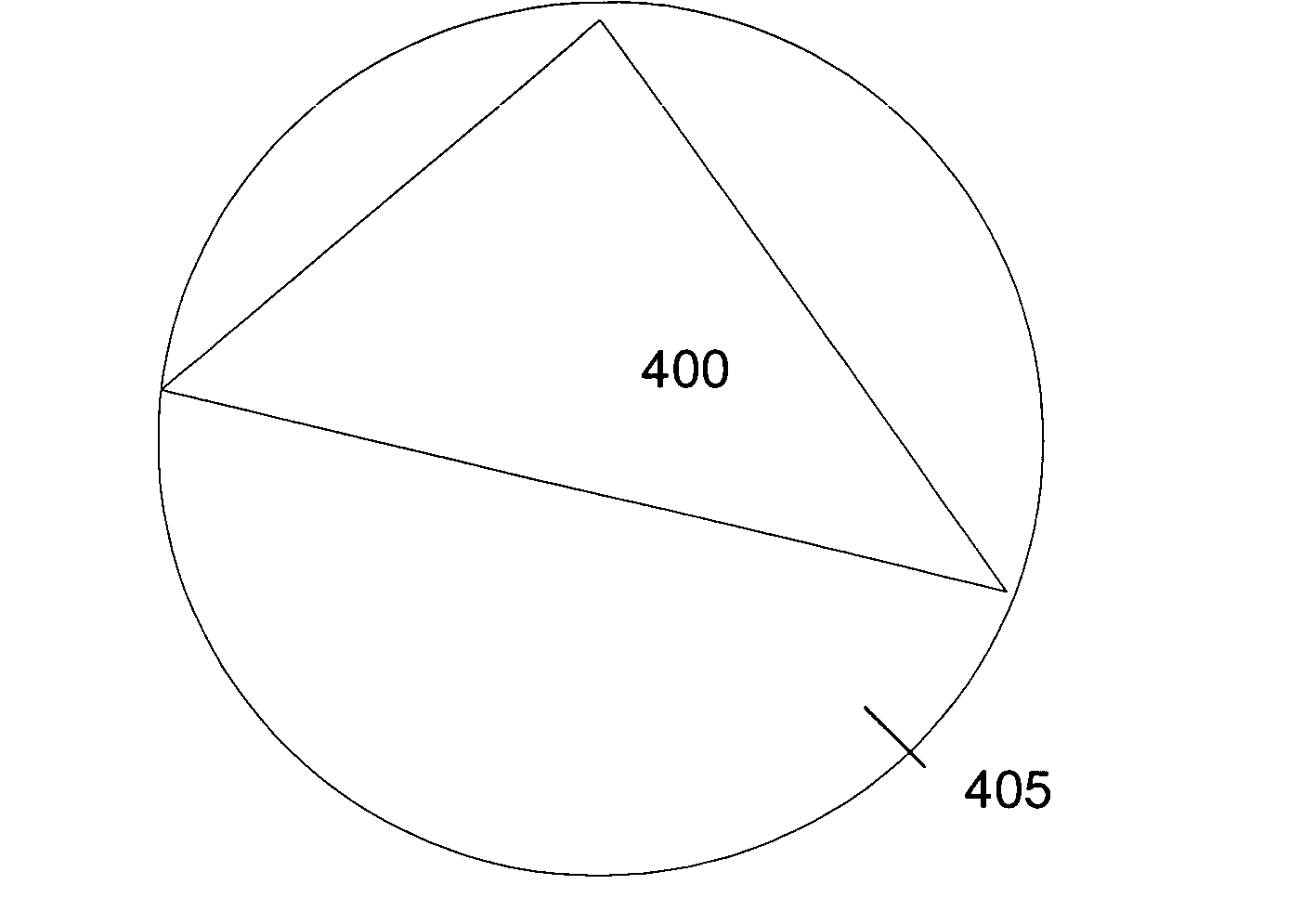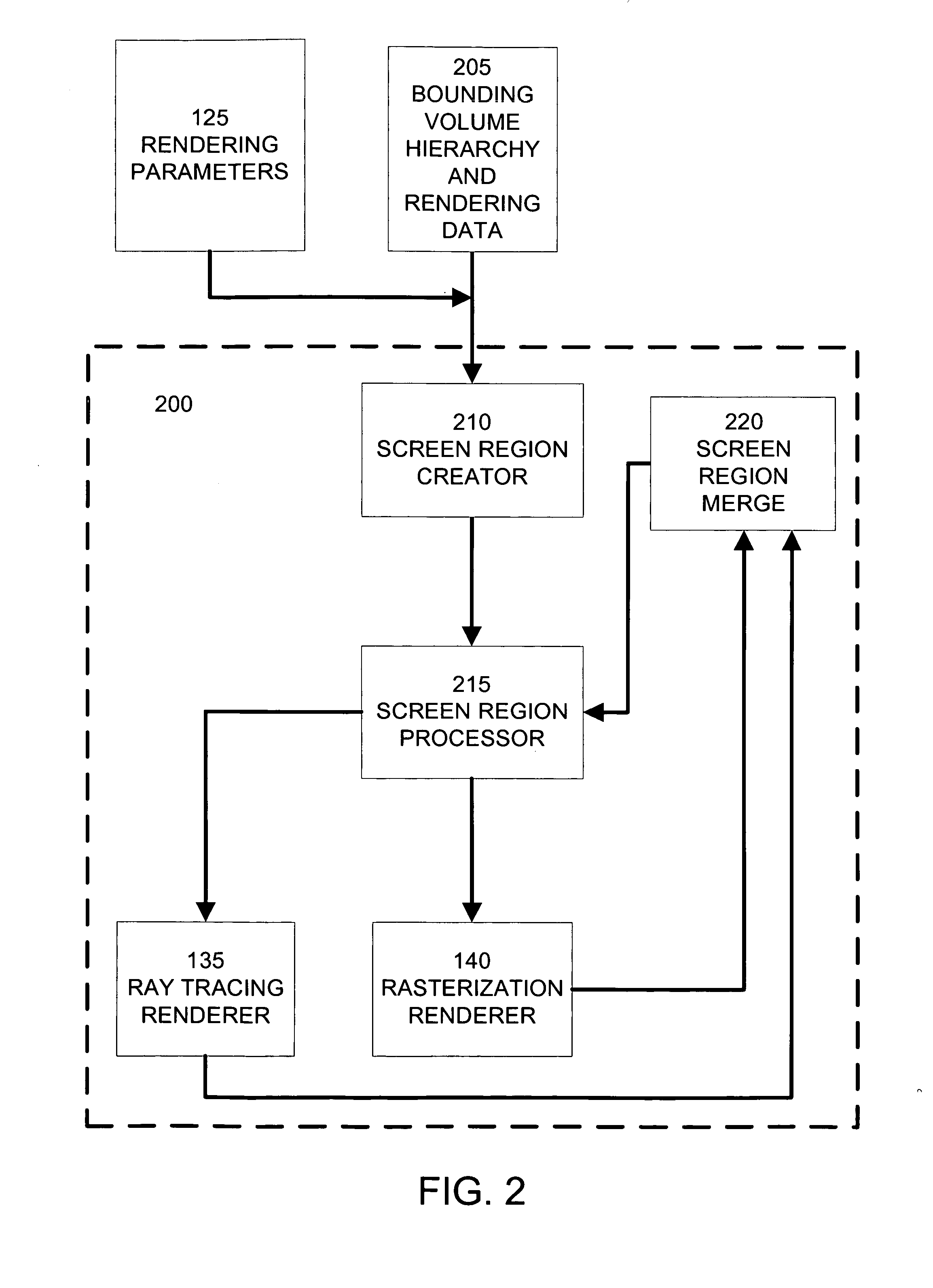Statistical rendering acceleration
a technology of statistic rendering and acceleration, applied in the field of computer graphics, can solve the problems of rasterization technique computation cost, primarily depends on the computational cost of ray tracing, and the computational cost of rendering images using ray tracing is typically much greater than that from rasterization
- Summary
- Abstract
- Description
- Claims
- Application Information
AI Technical Summary
Benefits of technology
Problems solved by technology
Method used
Image
Examples
Embodiment Construction
[0016]FIG. 1 illustrates a computer graphics rendering system 100 according to an embodiment of the invention. Geometry representing a scene, including static geometry 105 and dynamic geometry 110, is supplied to bounding volume hierarchy generator 120. In this embodiment, geometry is separated into static (e.g. non-moving and / or non-deforming) and dynamic (moving and / or deforming) portions to improve the performance of bounding volume hierarchy generator 120. In alternate embodiments, scene geometry is provided to bounding volume hierarchy 120 without any classification into static or dynamic categories. In a further embodiment, a previously-created bounding volume hierarchy 115, created for example during a pre-processing stage or alternatively during the rendering of a previous frame, is also provided to bounding volume hierarchy generator 120.
[0017] Bounding volume hierarchy generator 120 generates a bounding volume hierarchy representing the approximate spatial distribution of...
PUM
 Login to View More
Login to View More Abstract
Description
Claims
Application Information
 Login to View More
Login to View More - R&D
- Intellectual Property
- Life Sciences
- Materials
- Tech Scout
- Unparalleled Data Quality
- Higher Quality Content
- 60% Fewer Hallucinations
Browse by: Latest US Patents, China's latest patents, Technical Efficacy Thesaurus, Application Domain, Technology Topic, Popular Technical Reports.
© 2025 PatSnap. All rights reserved.Legal|Privacy policy|Modern Slavery Act Transparency Statement|Sitemap|About US| Contact US: help@patsnap.com



